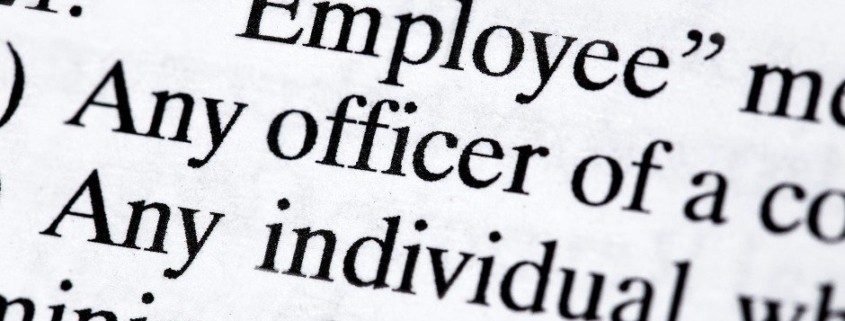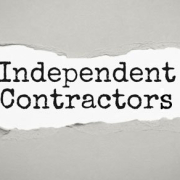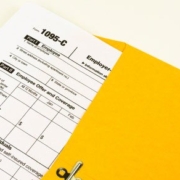Form W-2 or 1099-NEC? Employees vs. Independent Contractors
- Find out why using the correct form to report annual wages is so important.
- Learn the three factors used to determine whether a worker is an employee or an independent contractor.
- Find out which workers get W-2s and which ones get 1099-NEC forms.
- What if a worker is both an employee and a contractor?
- Learn due dates for both forms and to which agency you should send them.
Every business may expect to file annual wage reports as one of its many end-of-year responsibilities. But the task is not as straightforward as some would think. The people who have received wages must receive the reports. At the same time, businesses must file with the Social Security Administration (SSA) or the Internal Revenue Service (IRS). In some cases, businesses must file with both. You’ll need to decide whether to use a W-2 or a 1099-NEC for each worker, and that decision depends entirely on the payee and how you categorize the relationship between that person and the business.
You must prepare wage reports for employees as well as for independent contractors. However, each type of wage earner receives a different form for filing their income tax returns. The information that a business provides to the appropriate government agency needs to match the information submitted by the wage earner. This ensures accuracy and that both parties are paying the taxes that they owe.
Your business must use the correct form. In order to do that, you need to ascertain whether or not the IRS considers the payee an employee. Getting this right is important, as incorrectly labeling an individual as a non-employee can result in significant penalties. If you need help deciding how to define your workers, Fiducial can help. Read on to learn more!
The Difference Between an Employee and an Independent Contractor
Though at first glance it may seem obvious whether a wage earner is a nonemployee or an employee, there are a lot of instances where business owners are not certain how an individual’s role is best defined. To clear up confusion, the IRS has identified three specific distinguishing criteria: the relationship between the worker and the employer; whether the business has financial control over the individual’s payment terms; and whether the business has behavioral control over the individual. Let’s take a closer look at each.

The Relationship Between the Worker and the Employer
Business owners who are not sure whether an individual is an employee should determine the answers to specific questions about their role within the organization – or whether they have one at all. Examples of appropriate questions would be whether the duties that the person is responsible for are integral to the operations of the business and whether the individual receives paid vacation or benefits from the organization.
Though some point to the existence of a written contract as evidence supporting an individual being either an independent contractor or an employee, a contract by itself is not enough to support an argument one way or another.
Financial Control
Another straightforward indication of whether a wage earner is an employee or a contractor is based upon how the individual is paid, and why. A person that charges based on their own fee structure in exchange for a service performed is not an employee. A business owner has the choice of paying or not paying the amount demanded or seeking somebody else to provide the service.
That is not the case with an employee. In this case, an employer determines an employee’s pay from the start. Employers can control the work assigned to an employee and the employee must perform based upon instructions. The same is not true for an independent contractor.
Behavioral Control
Finally, an employee’s work is directed by their employer, both in terms of what they do and how, where, and when they will do it. The same is not true for an independent nonemployee. These individuals may self-direct and create their own terms and conditions for their schedule, their work environment, and more. Though a business may provide specifications for the work product or job, the professional that is being paid is not controlled by the business’ code of conduct, work hours, or any other specifics that an employee is obligated to follow.
Using the Correct Forms to Suit the Individual–W-2 or 1099-NEC?
Employees get W-2 Forms – Employees’ wage information gets reported on W-2 forms. These contain the following information:
- The amount of taxable income that the employee was paid and the amount of federal income tax that the employer withheld from the employee’s paychecks
- The total Medicare and Social Security income that the individual earned and the amount of FICA taxes withheld on that income
- The amount of state income and related taxes withheld from the amount paid to the employee
- Employee tip income
- The value of any taxable and non-taxable employee benefits
Non-employees get 1099-NEC Forms – Wage information for non-employees gets reported on Form 1099-NEC for any non-employees paid $600 or more during the tax year. Appropriate recipients of this form include:
- Nonemployees such as freelancers and independent contractors
- Attorneys under specific circumstances
- An individual or entity in the business of catching fish from whom you have purchased fish or “other aquatic life”
This form reflects all of the payments made to the individual over the course of the tax year. However, independent contractors do not have Social Security or Medicare withheld from their income. Take note that this form is new for 2020, replacing the previously used Form 1099-MISC for independent contractors. There are others that had previously received 1099-MISC for payments, and that form will continue to be used for them.
Individuals that Are Both Employee and Contractor Get Both W-2 and 1099-NEC Forms
There are some situations where an individual can be both an employee and an independent contractor. An example would be an administrative assistant who also consults as an interior decorator. In this case, the individual would be a paid employee who receives a W-2 for their role within your organization and would also receive a 1099-NEC for the interior design work done for your offices.
When Should You Complete W-2 and 1099-NEC Forms and What Should You Do with Them?
Both employees and the Social Security Administration must receive completed W-2 forms no later than January 31st following the tax year for which they have been prepared. The same date applies for 1099-NEC forms, though you must submit them to the IRS rather than to Social Security. You may submit both W-2 forms and 1099-NEC forms online.
Have questions about which forms need to be submitted from your business? Call Fiducial at 1-866-FIDUCIAL or make an appointment at one of our office locations to discuss your situation.
Ready to book an appointment now? Click here. Know someone who might need our services? We love referrals!









